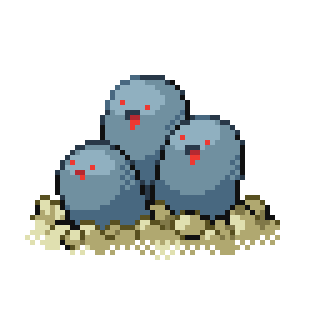You know, ZFS, ButterFS (btrfs…its actually “better” right?), and I’m sure more.
I think I have ext4 on my home computer I installed ubuntu on 5 years ago. How does the choice of file system play a role? Is that old hat now? Surely something like ext4 has its place.
I see a lot of talk around filesystems but Ive never found a great resource that distiguishes them at a level that assumes I dont know much. Can anyone give some insight on how file systems work and why these new filesystems, that appear to be highlights and selling points in most distros, are better than older ones?
Edit: and since we are talking about filesystems, it might be nice to describe or mention how concepts like RAID or LUKS are related.
As with every software/product: they have different features.
ZFS is not really hip. It’s pretty old. But also pretty solid. Unfortunately it’s licensed in a way that is maybe incompatible with the GPL, so no one wants to take the risk of trying to get it into Linux. So in the Linux world it is always a third-party-addon. In the BSD or Solaris world though …
btrfs has similar goals as ZFS (more to that soon) but has been developed right inside the kernel all along, so it typically works out of the box. It has a bit of a complicated history with it’s stability/reliability from which it still suffers (the history, not the stability). Many/most people run it with zero problems, some will still cite problems they had in the past, some apparently also still have problems.
bcachefs is also looming around the corner and might tackle problems differently, bringing us all the nice features with less bugs (optimism, yay). But it’s an even younger FS than btrfs, so only time will tell.
ext4 is an iteration on ext3 on ext2. So it’s pretty fucking stable and heavily battle tested.
Now why even care? ZFS, btrfs and bcachefs are filesystems following the COW philisophy (copy on write), meaning you might lose a bit performance but win on reliability. It also allows easily enabling snapshots, which all three bring you out of the box. So you can basically say “mark the current state of the filesystem with tag/label/whatever ‘x’” and every subsequent changes (since they are copies) will not touch the old snapshots, allowing you to easily roll back a whole partition. (Of course that takes up space, but only incrementally.)
They also bring native support for different RAID levels making additional layers like mdadm unnecessary. In case of ZFS and bcachefs, you also have native encryption, making LUKS obsolete.
For typical desktop use: ext4 is totally fine. Snapshots are extremely convenient if something breaks and you can basically revert the changes back in a single command. They don’t replace a backup strategy, so in the end you should have some data security measures in place anyway.
*Edit: forgot a word.
So ext4 is the best for desktop gaming performance?
[This comment has been deleted by an automated system]
ZFS is a crazy beast that’s best for high end server systems with tiered storage and lots of RAM.
ext4 is really just a basic file system. Its superior to NTFS and fat as it does have extra features to try to prevent corruption but it doesn’t have a large feature set.
Btrfs is kind of the new kid on the block. It has strong protection against corruption and has better real world performance than ext4. It also has more advanced features like sub volumes and snapshots. subvolumes are basically virtual drives.
Another few older options include things like XFS but I won’t go into those.
List of filesystems: https://en.m.wikipedia.org/wiki/Comparison_of_file_systems
After using ext4 for yyyeeeaaaarrrrrsss, when I upgraded my MX21 to MX23 I used btrfs, with subvolumes, especially for easy backup/snapshot/timeshift.
Just at install, super easy, create a small ext4 boot partition on the SSD, then a big LUKS partition, format with btrfs, create subvolumes for / /home /var /swap and that’s it. No hassle with sizing correctly.
btrfs seems pretty stable. I see no diff in performance compared to ext4 because my application are not that dependant to FS speed, and with SSD anyway?
oh yeah, built-in compression too!
ext4 boot partition? Does that mean you have Coreboot, not UEFI?
EFI with grub
Don’t you need FAT 32 for compatibility?
Yes for /boot/efi you’re right but /boot is ext4
The principled “old” way of adding fancy features to your filesystem was through block-level technologies, like LVM and LUKS. Both of those are filesystem-agnostic, meaning you can use them with any filesystem. They just act as block devices, and you can put any filesystem on top of them.
You want to be able to dynamically grow and shrink partitions without moving them around? LVM has you covered! You want to do RAID? mdadm has you covered! You want to do encryption? LUKS has you covered? You want snapshotting? Uh, well…technically LVM can do that…it’s kind of awkward to manage, though.
Anyway, the point is, all of them can be mixed and matched in any configuration you want. You want a RAID6 where one device is encrypted split up into an ext4 and two XFS partitions where one of the XFS partitions is in RAID10 with another drive for some stupid reason? Do it up, man. Nothing stopping you.
For some reason (I’m actually not sure of the reason), this stagnated. Red Hat’s Strata project has tried to continue pushing in this direction, kind of, but in general, I guess developers just didn’t find this kind of work that sexy. I mentioned LVM can do snapshotting "kind of awkward"ly. Nobody’s done it in as sexy and easy way to do as the cool new COWs.
So, ZFS was an absolute bombshell when it landed in the mid 2000s. It did everything LVM did, but way way way better. It did everything mdadm did, but way way way better. It did everything XFS did, but way way way better. Okay it didn’t do LUKS stuff (yet), but that was promised to be coming. It was Copy-On-Write and B-tree-everywhere. It did everything that (almost) every other block-level and filesystem previously made had ever done, but better. It was just…the best. And it shit all over that block-layer stuff.
But…well…it needed a lot of RAM, and it was licensed in a way such that Linux couldn’t get it right away, and when it did get ZFS support, it wasn’t like native in-the-kernel kind of stuff that people were used to.
But it was so good that it inspired other people to copy it. They looked at ZFS and said “hey why don’t we throw away all this block-level layered stuff? Why don’t we just do every possible thing in one filesystem?”.
And so BtrFS was born. (I don’t know why it’s pronounced “butter” either).
And now we have bcachefs, too.
What’s the difference between them all? Honestly mostly licensing, developer energy, and maturity. ZFS has been around for ages and is the most mature. bcachefs is brand spanking new. BtrFS is in the middle. Technically speaking, all of them either do each other’s features or have each other’s features on their TODO list. LUKS in particular is still very commonly used because encryption is still missing in most (all?) of them, but will be done eventually.
I know I’m not making a helpful contribution here, but I’ve been wondering about this stuff for a while myself and this thread has some great answers. Thanks for asking this OP.
I use f2fs on my Raspberry Pis, it’s designed for flash storage and appears to have much better performance than ext4 on the same device. I’m not sure whether it’s suitable for SSDs, or just SD cards and USB (these devices are optimised for FAT and f2fs utilises that optimisation). When I tried to use f2fs on a proper laptop it was too early and the distro didn’t support booting from it. I assume that has changed now.
As for the others, I usually stick with ext4 as I’ve never seen a compelling reason not to.
I’ve started using BTRFS on my laptop with OpenSUSE and on my Steam Deck. It does two things for me, which I’m interested in. On OpenSUSE it does a snapshot before every system update. So if anything goes wrong I can easily roll back.
On the Steam Deck I love the deduplication. It’s really great for a ton of Windows games that all need their own little “Windows” environment which amounts to a GB or two per game. With BTRFS I only use that space once.
Can you elaborate more on deduplication? Is this a feature you setup, or does it sort of work out of the box? This is a new concept to me, but sounds incredibly useful, especially in that scenario.
I used a script that did everything for me, so I’m not 100 % sure. But as far as I know you enable the feature at mount time and then every time you copy something only a reference is copied until you actually do a change to the new or old file.
For everything else a cronjob runs every week or so to search for unnecessary duplicates.
And if a copied file is changed, btrfs only stores the difference instead of two complete files. E.g. if the 1GB file1 is copied to file2, they will take 1GB total. If 100MB is appended to file2, the total storage usage is 1,1GB
deleted by creator









